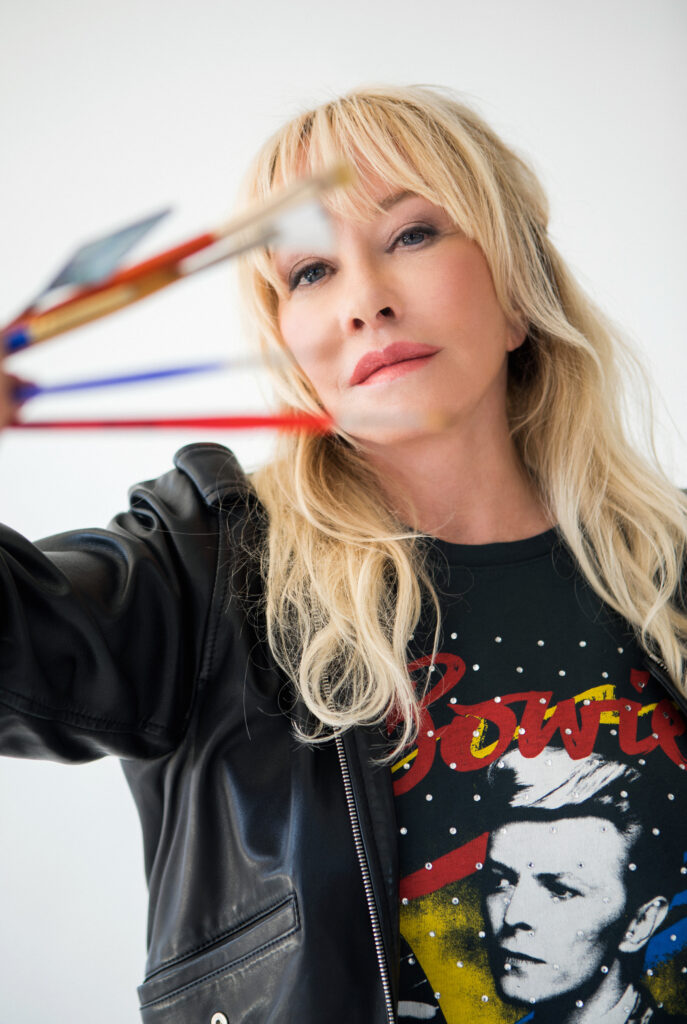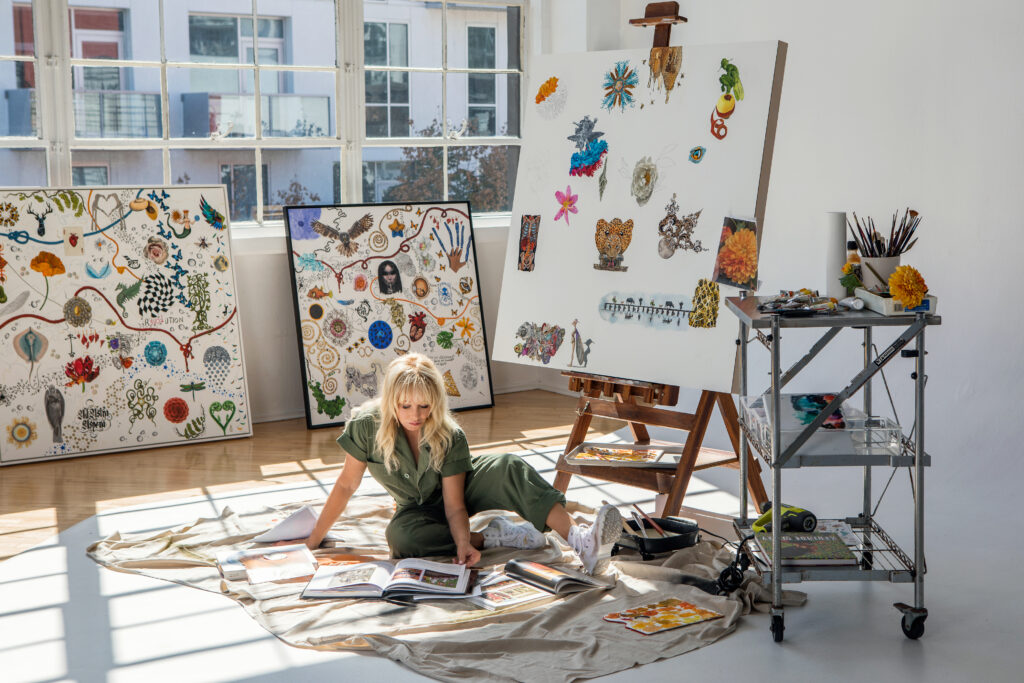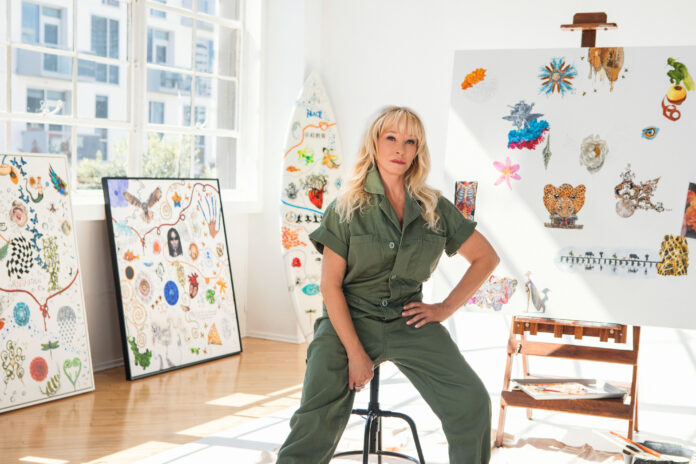( ENSPIRE She Did That ) Self-Taught Artist Doesn’t Plan Her Paintings, Letting Themes Emerge After Months of Work
ENSPIRE Contributor: Abby Ladner
For years, Becky Robbins stood by her husband Tony’s side as he grew his motivational coaching empire. Now, in the years since the couple’s divorce, she’s stepped out of that shadow and is making a name for herself in the world of visual art. Despite having no formal art training, Robbins has honed her craft of oil painting into a source of inspiration and catharsis.
In her paintings, Robbins often incorporates elements of the environment and nature to showcase her love of the Earth. She does not plan her paintings beforehand, and each piece can take anywhere from six months to a year to finish as the artwork slowly develops. Her most recent collection Yūgen is inspired by the Japanese aesthetic ideal that refers to an awareness of the universe that causes an emotional response too powerful to be put into words. In ENSPIRE’s interview below, Robbins discusses her career as a self-taught artist, the inspiration behind her paintings, and her unique artistic process.

First, I’d love to know how you first began developing your art and how you decided to turn that into a career.
After spending nearly a decade and a half creating and running a global personal development company that required literally all of my time, when that ended, I had the freedom of time to learn new things I had always been interested in, like music, Spanish, horticulture, and art. The art took front and center, and, as I painted and entered juried shows and received awards, the clients came, too. So, it was a kind of ease and grace of flow for me.
As a self-taught artist, are there any challenges you’ve faced that formally trained artists might not experience? Are there benefits as well?
The challenge of not being formally trained proved not to be the big issue I feared. While I would have loved to have years of exploration and training, I had to expand my skills from business, which is averse to trial and error, and, while I didn’t know the rules and procedures of not only the techniques and materials of art but the protocol for marketing as well, I broke the rules that I wasn’t aware of. The benefit has been to create different series of art that has become my signature and are unique to me.
How do you come up with the concept behind each of your pieces, and how do you take that concept and develop it into the completed painting?
When I finish one painting, I always have a board ready in the wings! They are 4 feet by 4 feet white canvases, and I never have a concept at all when I begin. However, I’m always tuned in to images from nature, travel, and research, and I start by painting one of these images. The next image comes, and then the next, and so on and so forth. During this process, at some unknowable point, a theme seems to reveal itself. I then draw a line, whether it’s a rope or stitch work, to connect all the images together.
Many of your pieces include the work of contributors. Why is that?
Having images on my work that are granted or submitted by photographers, artists, or from antique books has been one of the happy oddities of my work. As a novice, I was made aware of the importance of intellectual property rights and copyright material, and it has become such a joyous thing for me and for the brilliant artists and photographers who give permission for me to paint my version of their work into my art. I have new friends and collaborators all over the world, and they are all given credit and recognition on my website as well as on social media.
You’ve mentioned before that you spend so much time with your paintings that they start to become autobiographical—could you tell me more about that?
The pieces do take many months to do, and they have become more detailed as I have become more courageous with my skills. So, while I’m living life, it shows up in my work. An example is of a snowflake that I was inspired by after a ski trip with a pro who was teaching me about avalanche conditions based on the quality of the snowfall. This particular image was created in a lab by a physics professor who successfully developed technology for duplicate snowflakes. Another example is that my 13-year-old dog died, and I had painted lungs from twigs and hung hearts that had stitches that were mending, not knowing yet that lungs are the organ harboring grief. So, life happens while I paint.

Your art contains an array of themes—connection with nature, resilience, finding peace—how do you hope your art affects those who view it?
When I paint, and this is such a gift, I’m not doing it for any motive other than the fulfillment I get. And, because of that, what I include as images or connection lines takes me on so many journeys over the months that it’s developing. Relative to what’s going on in the world, I keep my studio and my brain in a kind of sacred space because I need this contemplative solitude in order for ideas to come. I love when people spend time in front of them and I hope that when they view it, they come up with their own story on what it means to them.
What do you hope people take away from your story?
I hope this story inspires courageous creativity, even if someone thinks they can’t. I also know that what we focus on gains momentum, both good and not so good, so it’s our responsibility to decide how life will show up in spite of circumstances. Collectors who have purchased my art tell me they see something new and feel more delight the more they look. That’s so rewarding for us both.
With her paintings, Becky Robbins shows being able to make rules as an artist. To view more of Robbins’ art and learn more, visit her website here. Find her on Instagram, where she shares details of her work and artistic process.







